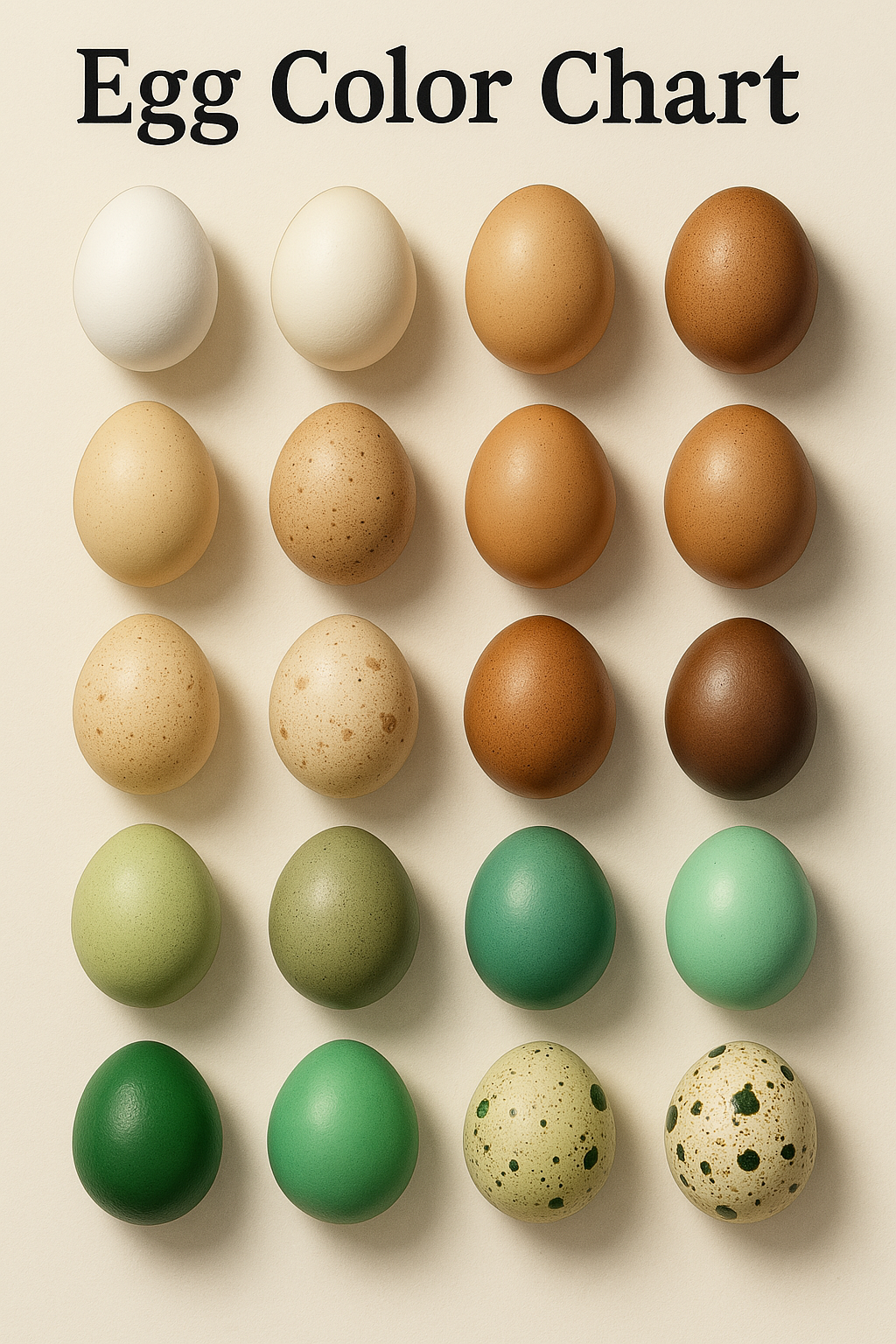Egg Color Guide: Understanding the Beauty and Science Behind Eggshell Colors
Introduction: More Than Just White or Brown
When most people think of eggs, they picture the typical white or brown shell. However, the world of backyard chickens and heritage breeds reveals a much broader palette: blues, greens, speckles, and even pink-tinted hues. But what do these colors mean, and do they affect the quality or nutrition of the egg?
In this comprehensive guide, we’ll explore what determines egg color, debunk common myths, and help you understand the role of breed, genetics, and environment in creating nature’s most beautiful breakfast staple.
—
Why Egg Color Matters (and Why It Doesn’t)
Fascination & Aesthetics: Colored eggs are visually appealing and often considered “farm-fresh.”
No Nutritional Difference: Despite popular belief, shell color has no bearing on the inside contents.
Consumer Perception: Some buyers associate brown with “healthier” and white with “factory eggs,” though this is purely psychological.
—
What Determines Eggshell Color?
1. Genetics (The Biggest Factor)
A hen’s breed is the main determinant of eggshell color.
Example breeds and their eggs:
Leghorn: White eggs
Rhode Island Red: Brown eggs
Ameraucana: Blue eggs
Easter Egger: Blue, green, or olive eggs
Marans: Deep chocolate brown eggs
2. Pigmentation Process
As the egg travels through the hen’s oviduct, pigments are deposited onto the shell:
Protoporphyrin: Produces brown shades
Oocyanin: Creates blue coloring
Blue pigment is deposited throughout the shell, while brown is added only on the surface.
3. Age and Health of the Hen
Younger hens tend to lay more richly colored eggs.
As hens age, egg color may fade.
Nutrition and stress levels can also impact pigment consistency.
4. Environment and Diet
While diet doesn’t change shell color directly, nutrient deficiencies can affect pigment quality.
Clean living spaces and proper care lead to healthier, more vibrant eggs.
—
Debunking Egg Color Myths
“Brown eggs are healthier.”
False – All egg colors have the same nutritional value, assuming hens are raised under similar conditions.
“White eggs are bleached.”
False – White eggs are naturally white, just as brown eggs are naturally brown.
“Blue and green eggs are rare.”
Partially true – These colors are less common commercially but are normal for breeds like Araucana or Easter Egger.
“Darker eggs taste better.”
Subjective – Taste is influenced by the hen’s diet, not the shell color.
—
Fun Egg Color Facts
Some hens lay speckled eggs, which are still safe and natural.
A hen will usually lay eggs of the same color throughout her life.
The color of a hen’s earlobe can sometimes indicate egg color—white earlobes often lay white eggs!
—
Eggshell Color Chart by Popular Breeds
—
Do Different Colored Eggs Have Different Shell Thickness?
Sometimes. Brown eggs can have slightly thicker shells, but this depends on the hen’s age, diet, and breed, not color alone.
—
How to Care for Hens to Maximize Egg Quality
Provide a balanced diet with calcium, protein, and fresh water.
Ensure adequate space and clean coops.
Limit stress with regular routines and gentle handling.
Use nesting boxes with soft bedding to prevent breakage.
—
Collecting & Storing Colored Eggs
Collect eggs daily to avoid exposure to heat or dirt.
Do not wash eggs unless dirty—natural coating (bloom) protects freshness.
Store in the refrigerator if washed, or on the counter (unwashed) for up to 2 weeks.
—
FAQs
Do colored eggs cost more?
Yes, at the store—because they come from specialty breeds that may lay fewer eggs.
Can a hen lay two different colored eggs?
No, a hen lays only one color throughout her life (though speckling can vary).
Are blue or green eggs more nutritious?
No—color doesn’t affect protein, fat, or vitamins.
Are there pink eggs?
Some light brown or cream-tinted eggs may appear pink due to bloom or lighting.
—
Conclusion: Embrace the Rainbow of Eggs
Egg color adds personality and charm to your egg carton—but it’s the hen’s health, care, and diet that matter most. From pure white to deep chocolate brown to sky blue, eggshell color is nature’s artistry at work. Whether you’re raising backyard chickens or shopping at your local farmers’ market, remember: it’s what’s inside that counts.
—
Call to Action
Share your egg finds with #EggColorGuide
Subscribe for more backyard chicken tips and poultry facts
Pin this guide for your farm-to-table journey
